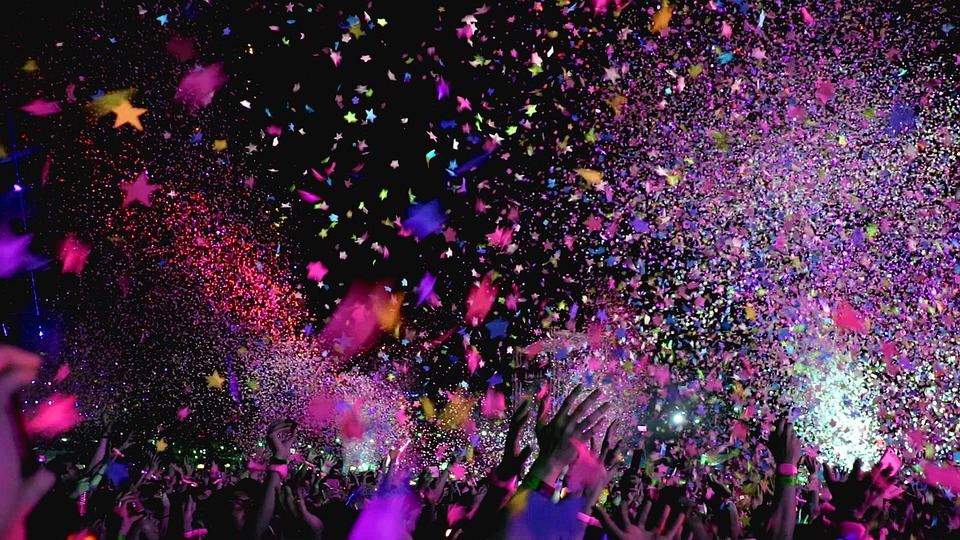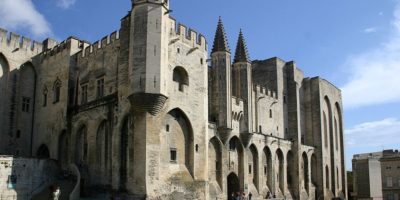
Image by Dominique Devroye from Pixabay
Top 10 Remarkable Facts about Dordogne
Dordogne is a department in southwest France, set between the Loire Valley and Pyrenees mountains. It’s known for prehistoric cave paintings in the Vézère Valley, like those in Lascaux Cave.
The town of Périgueux is home to the Cathedrale St-Front, with its 5 domes and the Vesunna Museum, built around Roman ruins. The medieval town Sarlat-la-Canéda centres on the Rue de la Republique and the Cathédrale St-Sacerdos.
For a good many years, British travellers have been fascinated by, ‘the Dordogne”, an area of France that conjures up an image of a return to rural life at a slow pace; it has even been said that the Dordogne, for the English, is imagined not really as an area of modern France – which it is – but more as an imaginary reproduction of a bygone rural England
The Dordogne is renowned for its love of food and drink – and boasts a long culinary heritage and a tremendous gastronomic heritage. The Dordogne is also known as France’s duck and truffle capital.
1. There is always a Festival in Dordogne

Image by ktphotography from Pixabay
The Dordogne plays host to a huge variety of festivals throughout the year. There are festivals to celebrate all manner of things; dance, food, mime, music, and wine (to name but a few). As a remarkable fact, Dordogne has no less than 30 festivals per year.
January start with the “Comic Strip Festival” a massive 4-day event (third largest in the world) held at the end of January in Angouleme (Charente). Followed by the Truffle Festival Sarlat an event on the third weekend in January celebrating every aspect of the Perigord black truffle (Dordogne).
Throughout the year diarize to participate in the numerous Music, snail, vintage, flamenco, and food and wine festivals.
Finish the year in December attending Christmas markets in the centre of both Limoges and Perigueux. Goose & Duck festivals in Limoges and St Yreix la Perche (Haute Vienne) and Capon festival at Blond with a Brotherhoods’ procession and capon racing (Haute Vienne).
2. The British Love Dordogne

Image by Christel SAGNIEZ from Pixabay
Dordogne has long been a firm favourite with Brits looking for a new life in France and with the picturesque villages, great food and surprisingly cheap property prices, it’s easy to see why. Using census figures from 2016, the research body claims that the Dordogne is the second most popular place for British people to live in, behind Paris.
The vast majority of British people in the Dordogne have been living here for more than ten years, with 53% of those retirees, and across Nouvelle-Aquitaine there are just over 39,000 resident British people, making up 26% of the total number of British people in France.
At a Dordogne level, the area around Eymet is the most popular destination for British people living in the département, with nine per cent of the local population made up of British, with Ribérac the next most popular with around 4.3%.
3. Remarkable Holiday hikes in the Dordogne

Image by Raimond Spekking from Wikimedia
The Dordogne is a great hiking area. There are relatively flat areas and parts where there are more differences in altitude, so more than enough options to choose from. Panoramic views can be seen from the higher altitudes.
In the villages, hiking trails have often been laid out from the centre (“Le Bourg”: centre of the village, village square) (Petites Randonnées, Circuits) which lead past the more beautiful parts of the surrounding area and return to the starting point. There is also the Grande Randonnées, these are the longer routes that also lead from village to village. From the next village, you can follow another Grand Randonnée. All routes are very accessible.
4. Dordogne has the highest density of Castles and Fortresses in France

Image by Sue Harris from Pixabay
The Dordogne contains the largest density of noble houses in France. There are up to 1500 castles, fortresses and country houses. These architectural highlights all share a mix of various building styles from multiple eras. Over forty can be visited, including:
- Château des Milandes
- Château de Biron
- Château de Jumilhac
- Château de Bridoire
Others are privately owned and have often been converted into luxury hotels or chambres d’hôtes, such as the Château de St-Geniès and the Château de Lalande. The 14th-century Maison Forte De Reignac in Tursac is the most peculiar castle of the Périgord. In France, it is the only example of a castle carved in rock that has remained intact and still has its original furniture.
5. Dordogne has the highest No. of Les plus beaux – authentic French villages

Image by David Mark from Pixabay
Together with the department of Aveyron, Dordogne has the highest number (10) of “plus beaux villages de France.” These are places that stand out because of their beauty and are therefore placed on a special national list.
They are for the most part restored medieval or fortified villages that have retained their original authenticity. In the valley of the Dordogne, you can find the fortified village of Domme, featuring a magnificent view over the valley, Beynac, Castelnaud-la-Chapelle, La Roque Gageac and Limeuil.
The valley of the Vézère has two of the ‘most beautiful villages in France’: St-Léon-sur-Vézère and St-Amand-de-Coly. These villages, which are typical of the Périgord, are sure to impress with their authentic appearance, beautiful architecture and pleasant tranquillity.
6. Dordogne is home to Remarkable Gardens and Parks

Image by David Mark from Pixabay
There are 33 parks and gardens in the region, 14 of which have been awarded Jardin remarquable (special garden). Every park and garden has its own unique atmosphere.
The gardens at Manoir d’ Eyrignac are ancient gardens in a classical style, those at the castle of Hautefort are typically French, while the hanging gardens of Marqueyssac are very romantic and the Jardins de l’ Imaginaire in Terrasson is more modern. In addition, there are 13 towns and villages in the Périgord, such as Périgueux and Bergerac, which have won national prizes for their exuberant floral splendour.
7. Dordogne Prehistoric Caves have hosted Julius Ceasar
In Dordognethere is an infinite number of cliff dwellings and caves trimmed with extraordinary concretions and prehistoric drawings…The Dordogne Valley boasts the most amazing natural heritage. Everyone from Julius Caesar to the Cro-Magnons has passed through (or under) the lush countryside of the Dordogne Valley. Now it’s your turn to explore the hidden treasures that 40,000 years of history has awarded 21st century Dordogne.
There are also waiting times for visiting a cave, especially during peak season. This has to do with a cave’s microclimate. The caves are threatened by the formation of algae and moss due to the heat, light and disturbance of the air currents. Photographing, carrying backpacks or other large bags, pets, as well as eating and leaving waste is prohibited.
You can find most caves around Les Eyzies-de-Tayac and elsewhere in the Dordogne. Definitely a must-see! Caves of de Rouffignac,between Rouffignac and Fleurac. Also known as the cave a hundred mammoths are explored the cave by train.
8. Dordogne is the Truffle Capital of France

Image by WikiImages from Pixabay
The most famous truffle market is held in Lalbenque (near Cahors) from December to March, every Tuesday afternoon at exactly 14:00. It’s reminiscent of a theatre show, as representatives from the finest restaurants in France (mockingly referred to as matadors) come to purchase truffles from farmers who stand side by side in a row with their baskets filled to the brim.
Truffles are a type of fungus that grows underground, especially near oak trees, also known as truffle oaks. This rather unsightly black mushroom is so fragrant that it’s earned the nickname the perfumed soul of the region. The maximum weight of this black diamond, a reference to the exceptionally high price that must be paid for it, is roughly 100 grams. The truffle is detected with the aid of pigs or dogs.
Right at the moment-suprême, when the church clock strikes exactly 14:00, deals are immediately turned into deeds and within fifteen minutes the market is over.
9. The Remarkable The Bleu des Causses Cheese is from Dordogne
The cheese variety known as “Bleu des Causses,” formerly called Bleu of Aveyron, has been awarded an AOC and AOP status. This cheese, made from raw cow’s milk, has blue veins, similar to the Roquefort. It is a popular cheese with a long tradition.
The Bleu des Causses is matured for three to six months, has a natural crust, and a beautiful ivory colour with blue-green fungus stains. It compliments a salad or omelette, but it’s especially after a meal with a piece of bread and a glass of Cahors or Marcillac wine, that this cheese truly comes to life and expresses its unique character.
10. River Dordogne
The Dordogne stretches for about 500 km, making it one of the longest rivers in France. From the Massif Central, a result of the merger of the Dorde and the Dogne, the river leads through the departments of Puy-de-Domme, Corrèze, Dordogne and Gironde to the Atlantic.
The Dordogne was vital for the transport of goods by boat. Due to large parts along the river being very violent, the boats, la Gabarre, were dismantled at the final point and brought back to the start by horse and cart.
It enters the department of Dordogne at Souillac. Along beautiful cliffs to Le Cingle de Montfort (a large loop in the river) and Domme. For many tourists, the Dordogne forms a challenge when trying to view it by canoe or kayak. They are available for rent at many spots along the river, perfect for a day trip or trek. To experience the river somewhat more peacefully, you can take a boat trip in a Gabarre. The river can also be easily explored by bicycle or car.
Many mythical areas are to be discovered: The valley of the Dordogne and its castles Of course, the Vézère Valley is also called the Valley of Man because Cro Magnon stayed there at the time of prehistory.
For prehistory museums, caves and shelters, beautiful gardens and superb troglodyte villages, make a point of experiencing the Dordogne region.
Planning a trip to Paris ? Get ready !
These are Amazon’s best-selling travel products that you may need for coming to Paris.
Bookstore
- The best travel book : Rick Steves – Paris 2023 – Learn more here
- Fodor’s Paris 2024 – Learn more here
Travel Gear
- Venture Pal Lightweight Backpack – Learn more here
- Samsonite Winfield 2 28″ Luggage – Learn more here
- Swig Savvy’s Stainless Steel Insulated Water Bottle – Learn more here
Check Amazon’s best-seller list for the most popular travel accessories. We sometimes read this list just to find out what new travel products people are buying.











